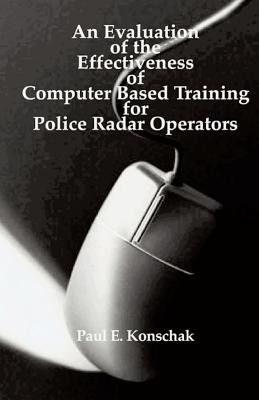
- We will send in 10–14 business days.
- Author: Paul E Konschak
- Publisher: Dissertation.Com. - Do Not Use
- ISBN-10: 1581121768
- ISBN-13: 9781581121766
- Format: 14 x 21.6 x 0.8 cm, minkšti viršeliai
- Language: English
- SAVE -10% with code: EXTRA
An Evaluation of Computer Based Training for Police Radar Operators (e-book) (used book) | bookbook.eu
Reviews
Description
The purpose of this study was to examine two instructional methods for delivering a radar operators training class for members of a municipal police department. The first method examined was the traditional classroom-based training with a certified radar instructor. The second method was a computer-based training (CBT) course based on the instructional material from the classroom-based course. The CBT course was administered on CD-ROM using the police department s Windows(c) based computers. This study compared the two methods of delivery to determine if the CBT course was as effective as the traditional classroom-based course. Effectiveness was measured by the completion times of the two courses, examination scores, and overall participant satisfaction levels. These measures were conducted using quasi-experimental design that involved two sample groups. The total population was sixty-nine police officers. The sample contained fourteen participants, divided into two equal groups of seven. The independent variable was the instructional method. The dependent variables were the course completion times, examination scores, and the satisfaction levels of the participants. Of the two groups of police officers, Group 1 received the CBT for radar operators, while Group 2 received the traditional classroom training. Data was gathered regarding the completion times, test results, and participant satisfaction levels of the two courses. A statistical analysis of the data was conducted to determine the difference in course completion times, test scores, and participant satisfaction levels between the two courses.
EXTRA 10 % discount with code: EXTRA
The promotion ends in 21d.20:34:41
The discount code is valid when purchasing from 10 €. Discounts do not stack.
- Author: Paul E Konschak
- Publisher: Dissertation.Com. - Do Not Use
- ISBN-10: 1581121768
- ISBN-13: 9781581121766
- Format: 14 x 21.6 x 0.8 cm, minkšti viršeliai
- Language: English English
The purpose of this study was to examine two instructional methods for delivering a radar operators training class for members of a municipal police department. The first method examined was the traditional classroom-based training with a certified radar instructor. The second method was a computer-based training (CBT) course based on the instructional material from the classroom-based course. The CBT course was administered on CD-ROM using the police department s Windows(c) based computers. This study compared the two methods of delivery to determine if the CBT course was as effective as the traditional classroom-based course. Effectiveness was measured by the completion times of the two courses, examination scores, and overall participant satisfaction levels. These measures were conducted using quasi-experimental design that involved two sample groups. The total population was sixty-nine police officers. The sample contained fourteen participants, divided into two equal groups of seven. The independent variable was the instructional method. The dependent variables were the course completion times, examination scores, and the satisfaction levels of the participants. Of the two groups of police officers, Group 1 received the CBT for radar operators, while Group 2 received the traditional classroom training. Data was gathered regarding the completion times, test results, and participant satisfaction levels of the two courses. A statistical analysis of the data was conducted to determine the difference in course completion times, test scores, and participant satisfaction levels between the two courses.


Reviews